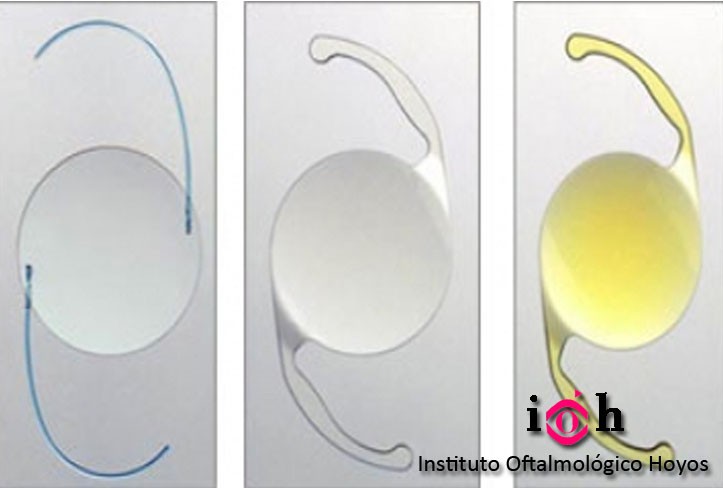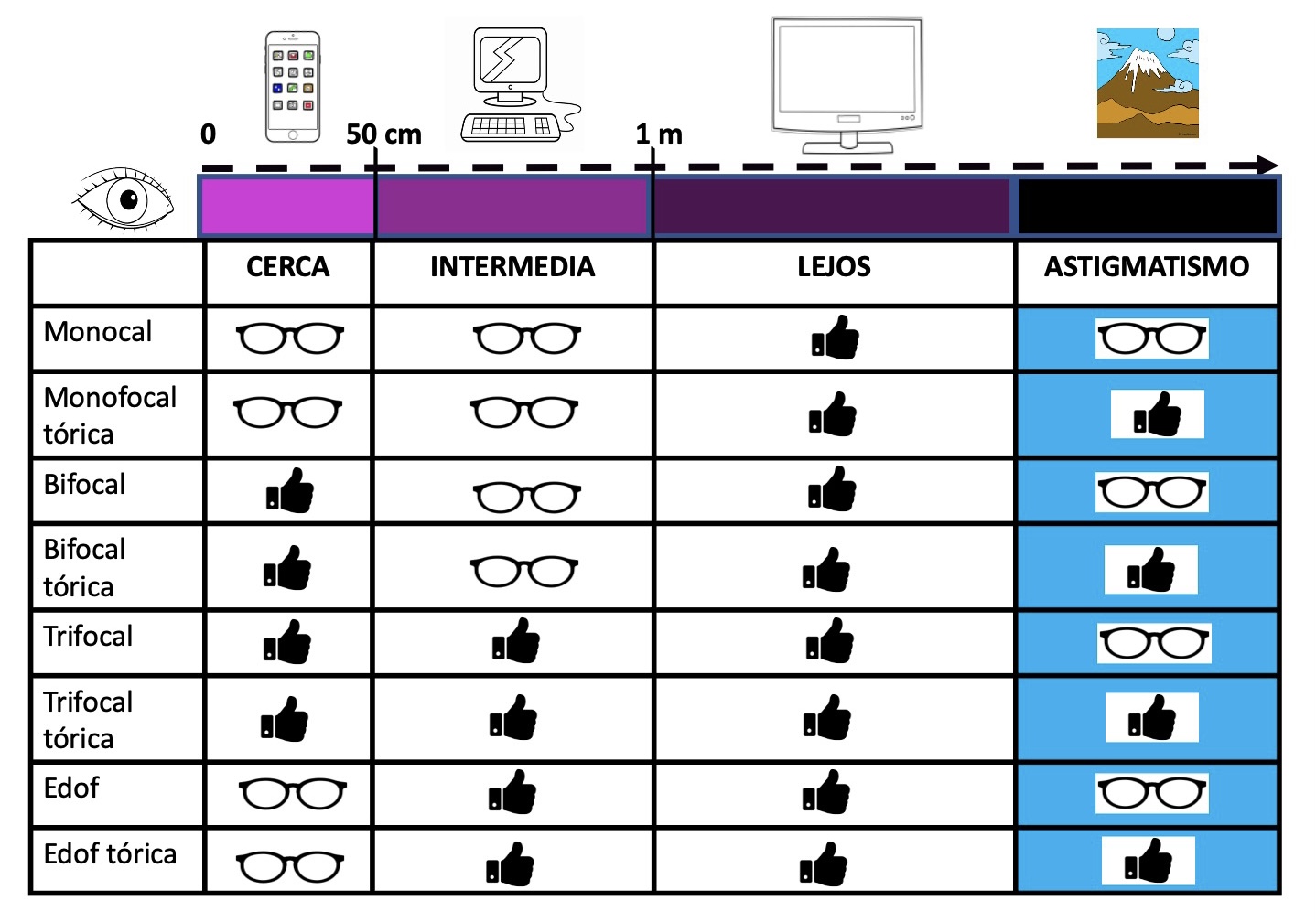
INTRAOCULAR LENSES
The crystalline lens is the eye’s natural lens, which with the passing of time loses its transparency, developing into cataracts. During cataract surgery, the opacified crystalline lens is extracted and is replaced by an intraocular lens (IOL) made of a synthetic material. Implanting an IOL is necessary for two reasons : to avoid using glasses with a high graduation and to maintain the intraocular spaces divided into two.
There exist different types of intraocular lenses, which will be differentiated according to the number of focuses they have on their optical area, each one corresponding to a focusing distance in our vision : near, intermediate and far.

- Near vision : A distance inferior to 50cm. This corresponds to the distance for reading, telephones and tablets.
- Intermediate vision : Between 50 cm and 1 meter. This corresponds to the distance of a computer.
- Far vision : Distances which are superior to 1 meter. This corresponds to the distance of a television and beyond.
According to these distances we can classify the different types of intraocular lenses :
- Monofocal lenses : these only have one focus, generally designed for far vision, which give good far vision without glasses and where glasses are necessary for intermediate and near vision.
- Bifocal lenses : these have two focuses, one for far vision and the other for near, which allows one to have less dependence on glasses.
- Trifocal lenses : these have three focuses, one for far vision, one for intermediate and the other for near vision, which means greater independence from glasses.
- EDOF lenses (Extended depth of focus) : these lenses do not have various focuses. Instead, they have a far focus which due to the design of the lens extends up to 40-50 cm from the eye, offering excellent vision at far and intermediate distances, although they are not so effective for near vision.


